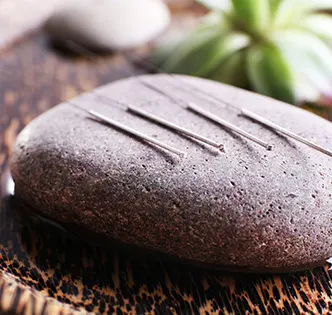

Traditional Chinese acupuncture is a crucial component of Traditional Chinese Medicine (TCM), with a history spanning thousands of years. Acupuncture involves stimulating specific points on the body, known as acupoints, to regulate the flow of qi (energy) and blood, thereby restoring balance and health. The fundamental theories behind acupuncture include the meridian system and the concepts of qi and blood. Meridians are energy pathways within the body, and qi and blood are essential substances for life activities. By needling these acupoints along the meridians, acupuncture can regulate internal functions and treat various diseases.
The basic steps of acupuncture treatment are as follows: First, the acupuncturist conducts a detailed initial consultation and assessment, understanding the patient’s medical history, symptoms, and lifestyle habits, and performing physical examinations and traditional diagnostic methods like pulse diagnosis. Based on the patient’s specific condition, the acupuncturist then develops a personalized treatment plan, determining the acupoints to be stimulated and the type of needles to be used.
Before starting the treatment, the acupuncturist thoroughly disinfects the patient’s skin and the needles to ensure safety and hygiene. The acupuncturist then inserts thin needles into the patient’s skin and muscles at specific acupoints, adjusting the depth and angle as necessary, sometimes gently rotating or lifting and thrusting the needles. The needles are usually retained at the acupoints for a certain period, during which the acupuncturist may make adjustments based on the patient’s response or apply heat (such as using moxibustion).
After the treatment, the acupuncturist carefully removes the needles and gently presses the acupoints to prevent bleeding and promote blood circulation. Finally, the acupuncturist discusses the treatment effects with the patient and provides further health advice or schedules follow-up treatments if necessary.
Acupuncture is suitable for treating a variety of conditions, such as pain, digestive issues, insomnia, stress, and anxiety. Due to its natural and non-invasive nature, acupuncture is increasingly favored by modern individuals. However, acupuncture treatments should be administered by professional acupuncturists to ensure safety and effectiveness.
Da Dao Chinese Medicine Acupuncture, dedicated to serving you with the best acupuncture services.
Initial Consultation and Assessment
The acupuncturist will first have a detailed conversation with the patient to understand their medical history, symptoms, and lifestyle habits, and will conduct physical examinations and traditional Chinese medicine diagnostic methods like pulse diagnosis.
Developing a Treatment Plan
Based on the patient’s specific condition, the acupuncturist will create a personalized treatment plan, determining the acupuncture points to be stimulated and the type of needles to be used.
Sterilization
Before inserting the needles, the acupuncturist will thoroughly disinfect the patient’s skin and the needles to ensure safety and hygiene.
Needle Insertion
The acupuncturist will insert thin needles into the patient’s skin and muscles at specific acupuncture points, adjusting the depth and angle as needed. Sometimes, the needles may be gently rotated or lifted and thrust.
Needle Retention and Adjustment
The needles are usually left in place for a certain period (typically 15-30 minutes). During this time, the acupuncturist may make adjustments based on the patient’s response or apply heat (such as using moxibustion).
Needle Removal and Follow-Up
After the treatment, the acupuncturist will carefully remove the needles and gently press the acupuncture points to prevent bleeding and promote blood circulation. They will then discuss the treatment effects with the patient and provide further health advice or schedule follow-up treatments if necessary.
Interested
Try
Very good
Auricular acupuncture therapy, also known as ear acupuncture, is a traditional Chinese medicine therapy that treats diseases and improves health by stimulating specific points on the ear. The ear is considered a microcosm of the human body, with corresponding auricular points for every organ and part of the body. By needling or applying other stimulation methods to these points, the body’s functions can be regulated, achieving therapeutic and health-promoting effects.
The fundamental principle of auricular acupuncture therapy is based on the theories of meridians and reflex zones in traditional Chinese medicine. The points on the ear are connected to the body’s organs and systems through meridians. When these points are stimulated, they can regulate the functions of the related organs through neural reflexes, promoting self-healing and health restoration.


Consultation and Assessment


Point Selection


Stimulation


